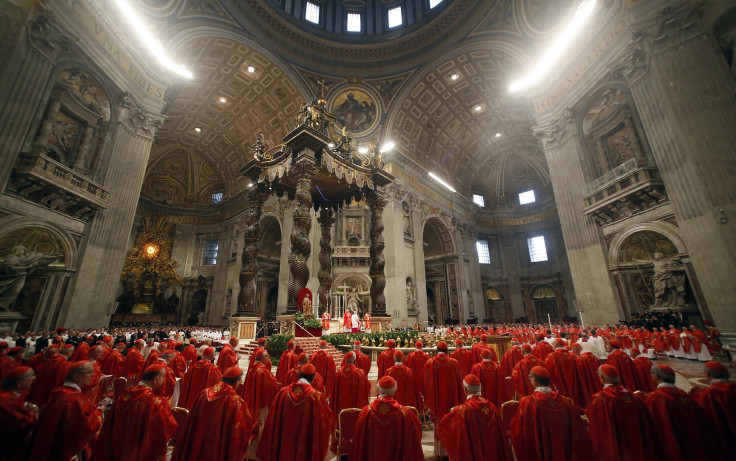Papal Conclaves: The Long And The Short

A conclave of 115 cardinals from around the world have gathered in Vatican City to elect a new pope, following last month’s resignation of Pope Benedict XVI.
The College of Cardinals would like to choose a new Holy Father ahead of Easter observances, but given that a new Pope will require a two-thirds majority, the election may take a while.
Yet, at least one church official, Cardinal Timothy Dolan, of New York City, is predicting a short conclave.
"My guess is that we'd have a new Successor of St. Peter by Thursday evening, with a hoped-for inaugural Mass on March 19, the feast of St. Joseph, the patron of the Church Universal, a holiday, and Father's Day here in Italy," Dolan wrote to his priests in New York, according to ABC News, which said a diocese spokesman confirmed the letter.
Holy Week commences on March 24, adding to the pressure the conclave may be feeling to install a new leader.
In any case, it's certain that this conclave won't convene as long as one that took place in the 13th century.
In 1268, cardinals gathered in the village of Viterbo in central Italy to select a successor to Pope Clement IV, who had just died. (They preferred this hamlet to the hubbub and plagues of Rome).
That conclave took 34 months – two years and 10 months -- from November 1268 to September 1271 – largely due to infighting between the French Angevin cardinals and the mostly Italian cardinals of a rival faction.
Clement IV had crowned Charles of Anjou as King of Naples and Sicily, formerly a papal fief, triggering deep resentment of the French monarchy’s growing influence in Italy.
Monsignor Charles Burns, a retired archivist at the Secret Vatican Archives, told ABC News, "The people of Viterbo were so annoyed by this, they said, 'OK, we are going to close the cardinals in.' The idea was to make it uncomfortable to persuade cardinals to get on with the job.”
Monsignor Salvatore del Cicuo said locking the conclave didn't speed up the process – so the irate locals tried to starve the cardinals out. Some villagers even ripped the roof off the palace they were staying in to accelerate the election.
Ultimately, the recalcitrant cardinals chose Teobaldo Visconti as Pope Gregory X – but since he was fighting in the crusades in the Holy Land, they had to wait another eight months for his return.
The conclave lasted so long that three of the 20 cardinal-electors died and one resigned during the marathon selection process.
Gregory, an apparently wise and impatient man, immediately set up new rules to guarantee quicker selections in the future – indeed, it was he who established the rules guiding the papal conclaves.
The shortest papal conclave occurred in October 1503 when Giuliano della Rovere was elected as Pope Julius II, succeeding Pope Pius III --- it took just 10 hours.
Part of the reason for the brevity of the conclave was that Pius had died after less than one month in office – that is, the members of the September conclave (i.e., those cardinals who elected Pius) were still hanging around the city and were able to quickly reassemble to name a new Holy Father.
In between the two conclaves, separated by just one month, some intrigue occurred that helped della Rovere’s chances. Among other things, he assured Cesare Borgia, the nobleman, politician (and son of Pope Alexander VI) that he could retain command of the papal army as well as certain territorial claims in Italy. In return, Borgia guaranteed the support of a group of Spanish cardinals who had earlier failed to support della Rovere in the September meeting. That was enough to hand della Rovere the papacy.
Della Rovere, as Pope Julius II, held office for 10 years through 1513. He's perhaps best known for commissioning Michelangelo's decoration of the Sistine Chapel’s ceiling, where the papal conclave is meeting.
© Copyright IBTimes 2025. All rights reserved.





















